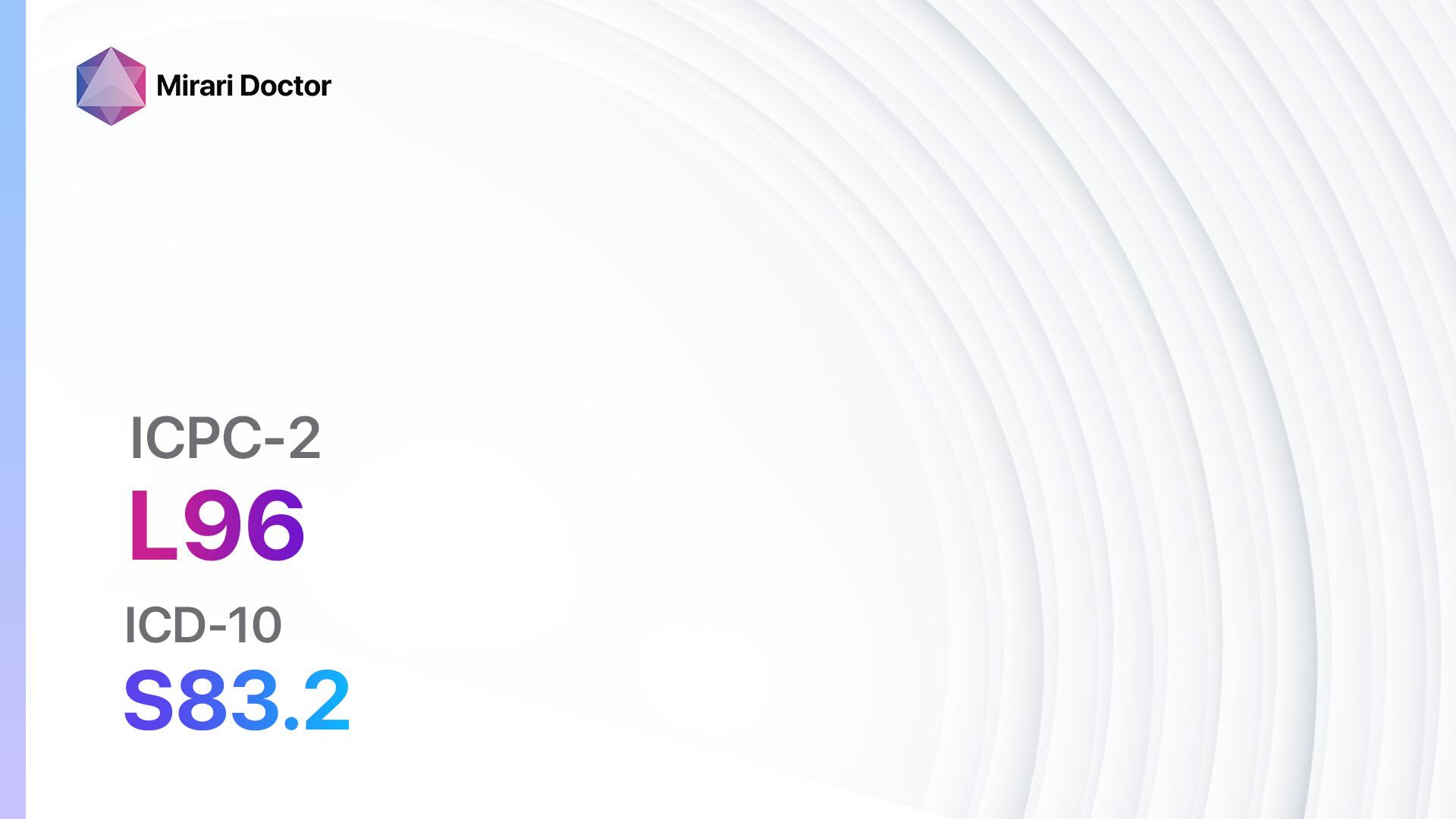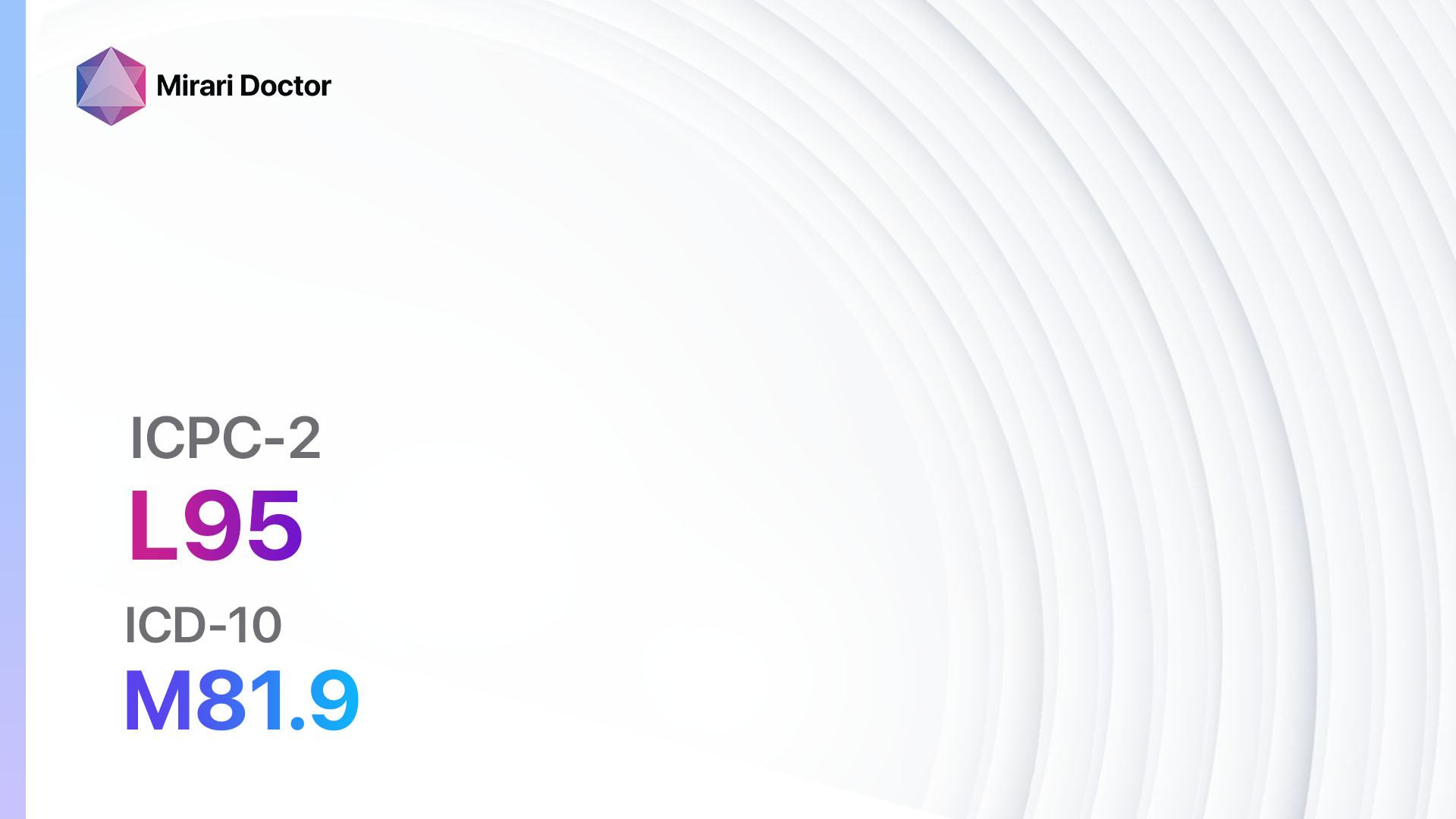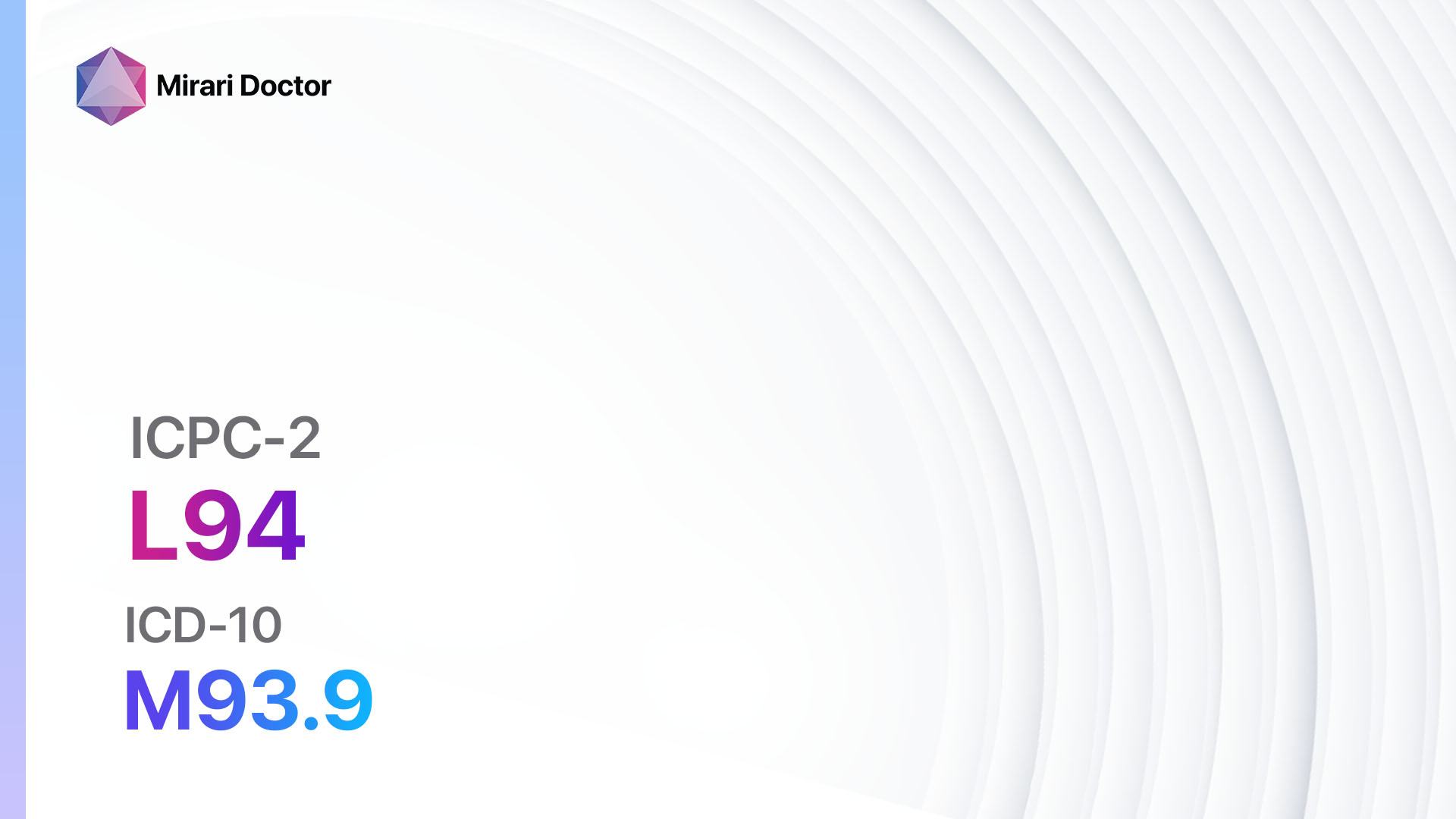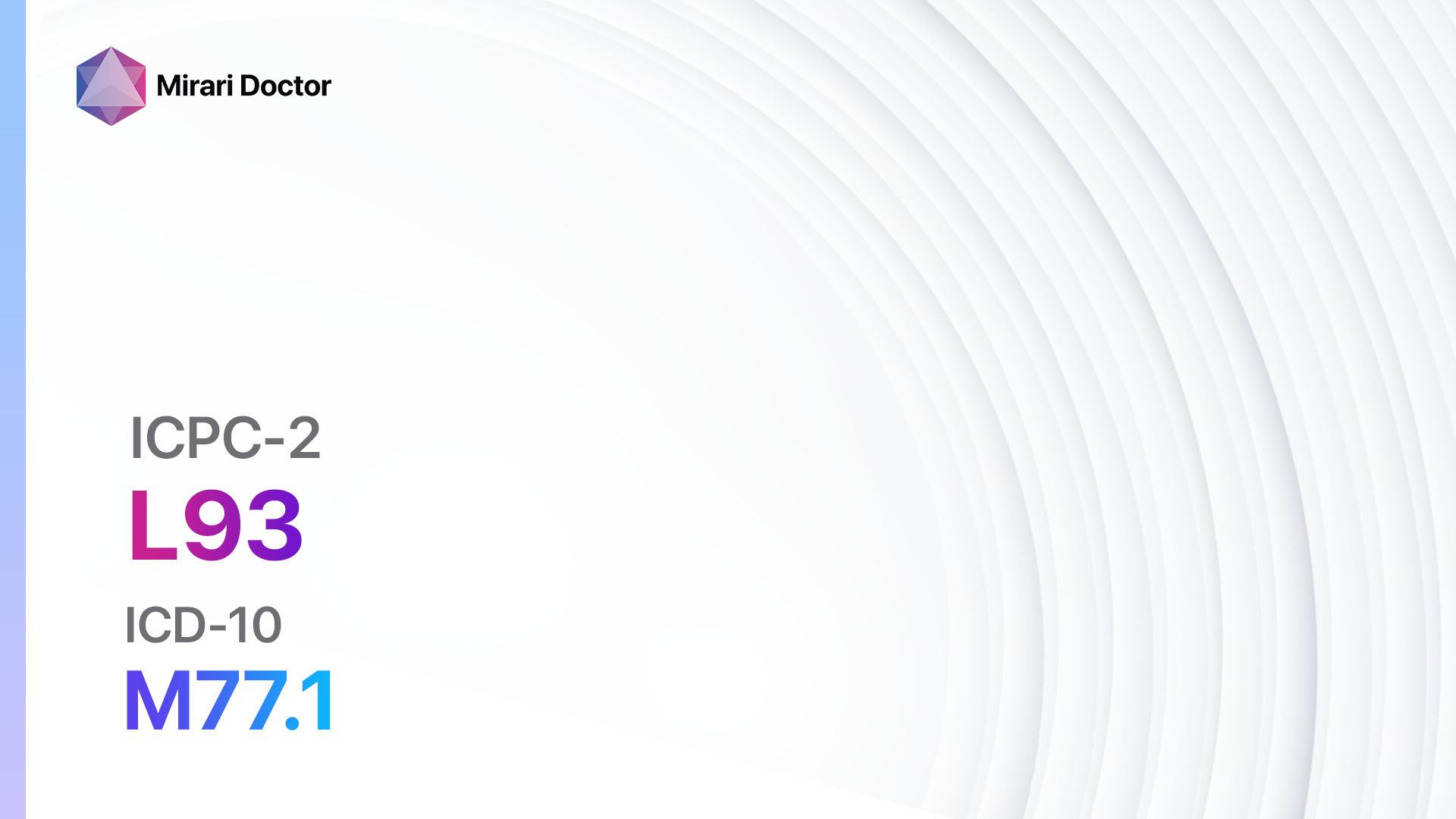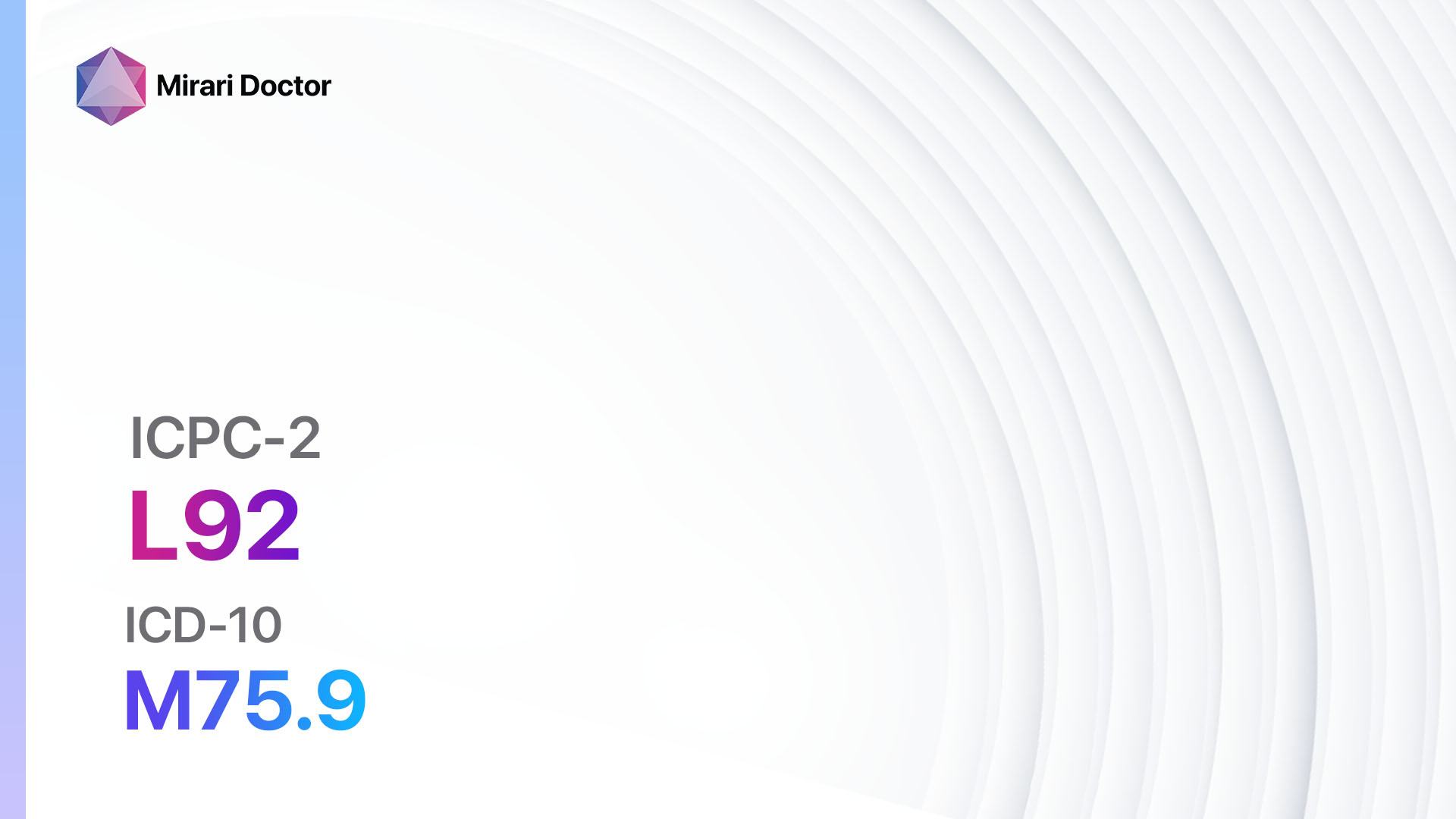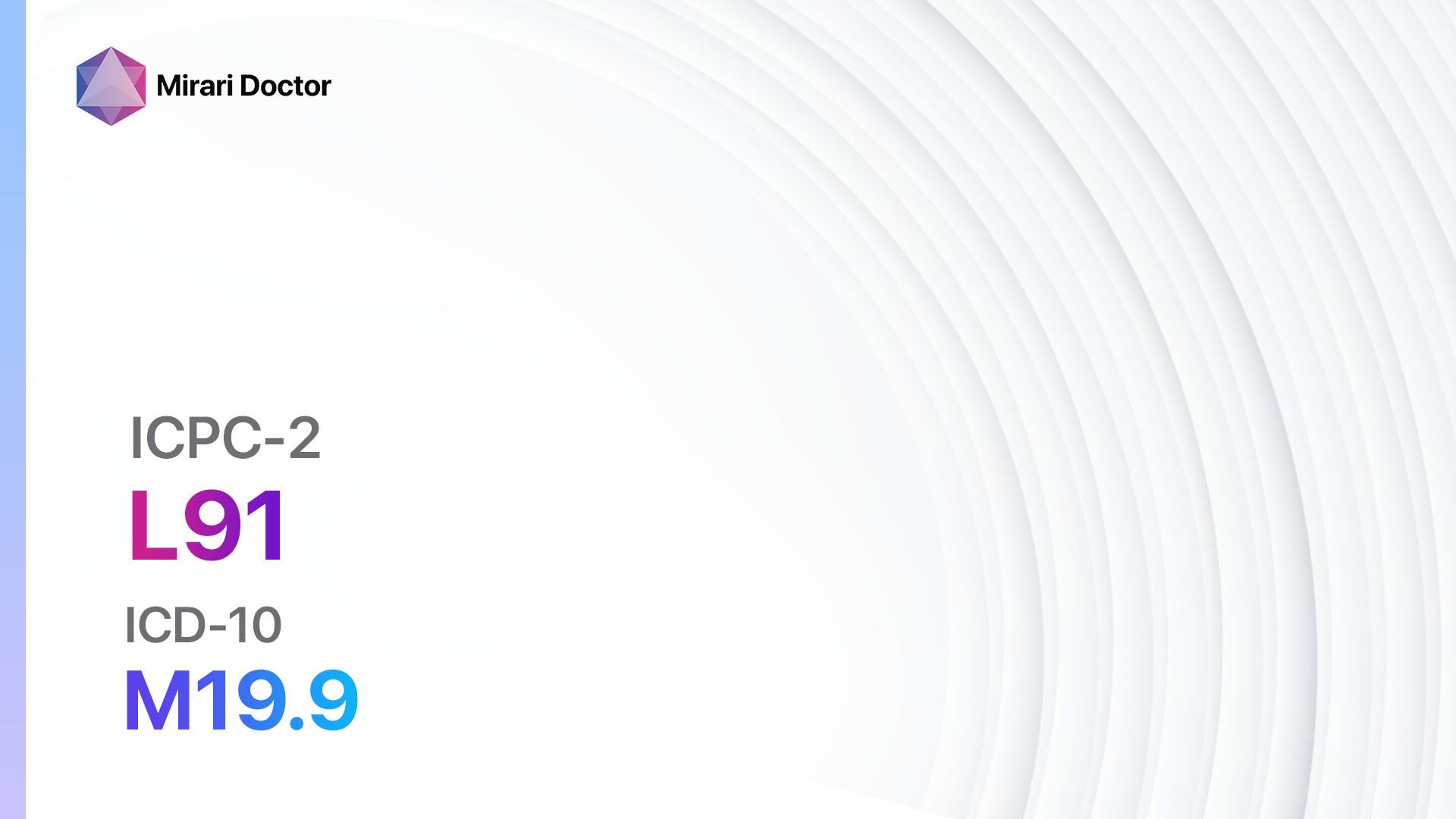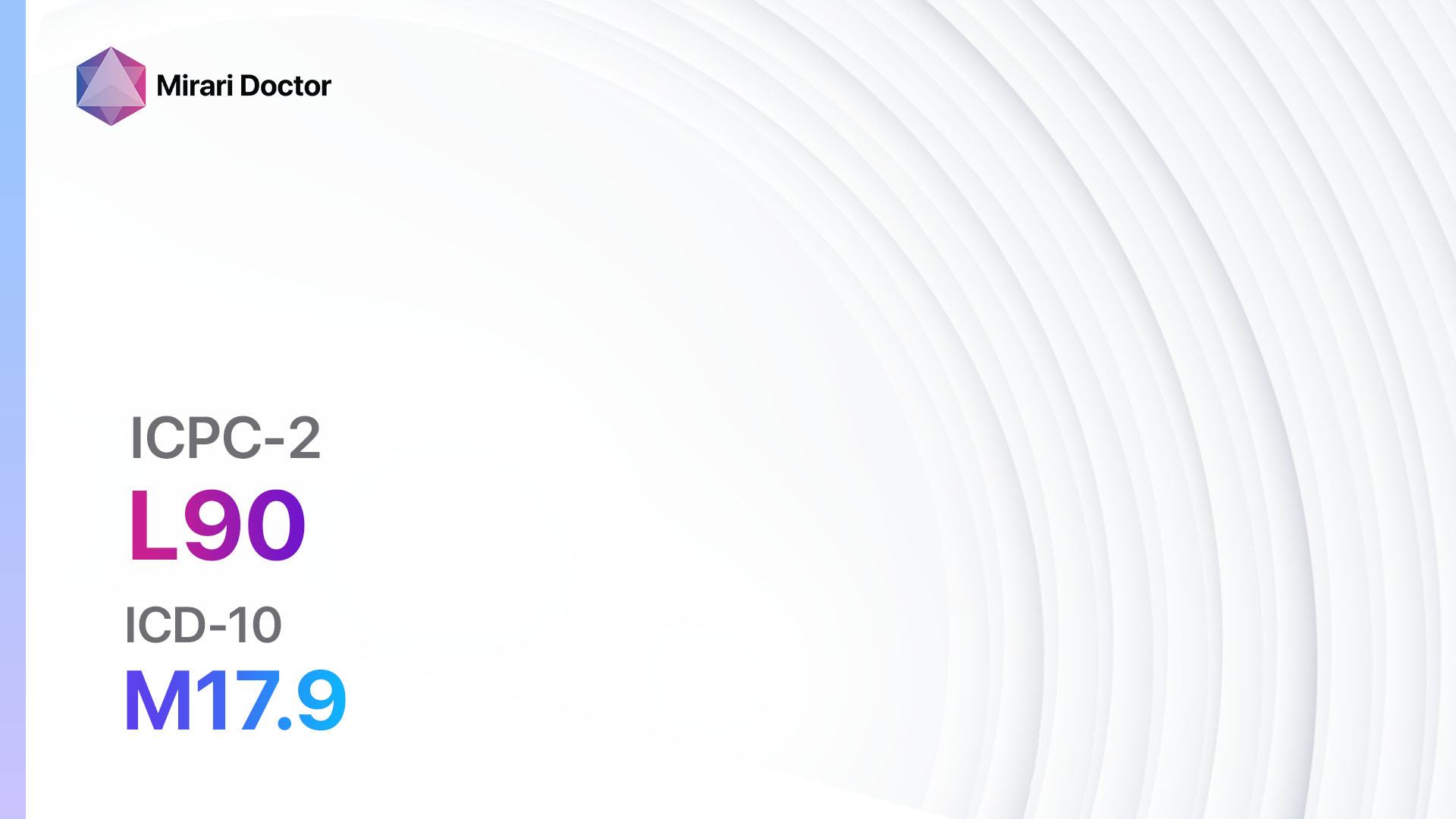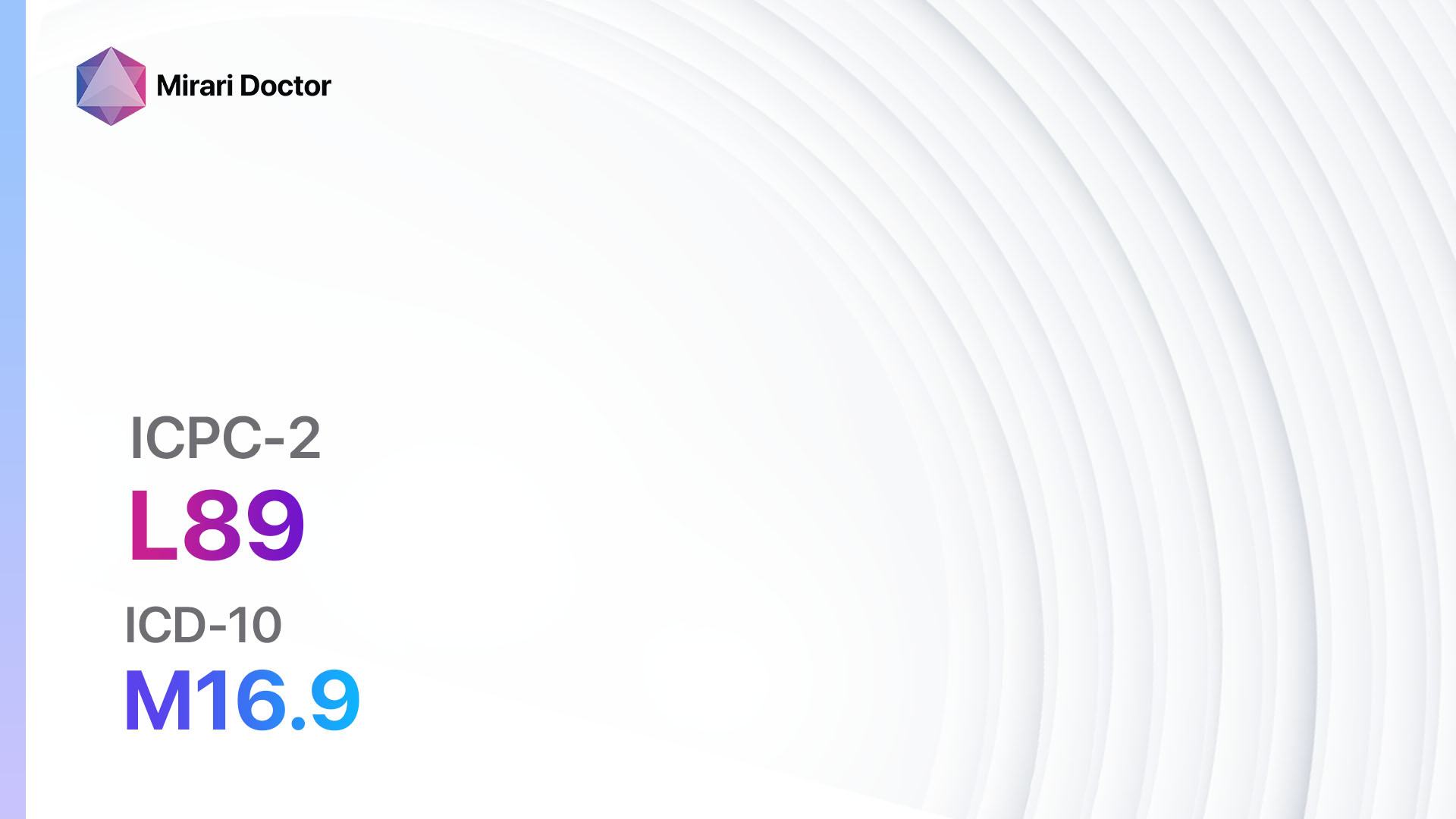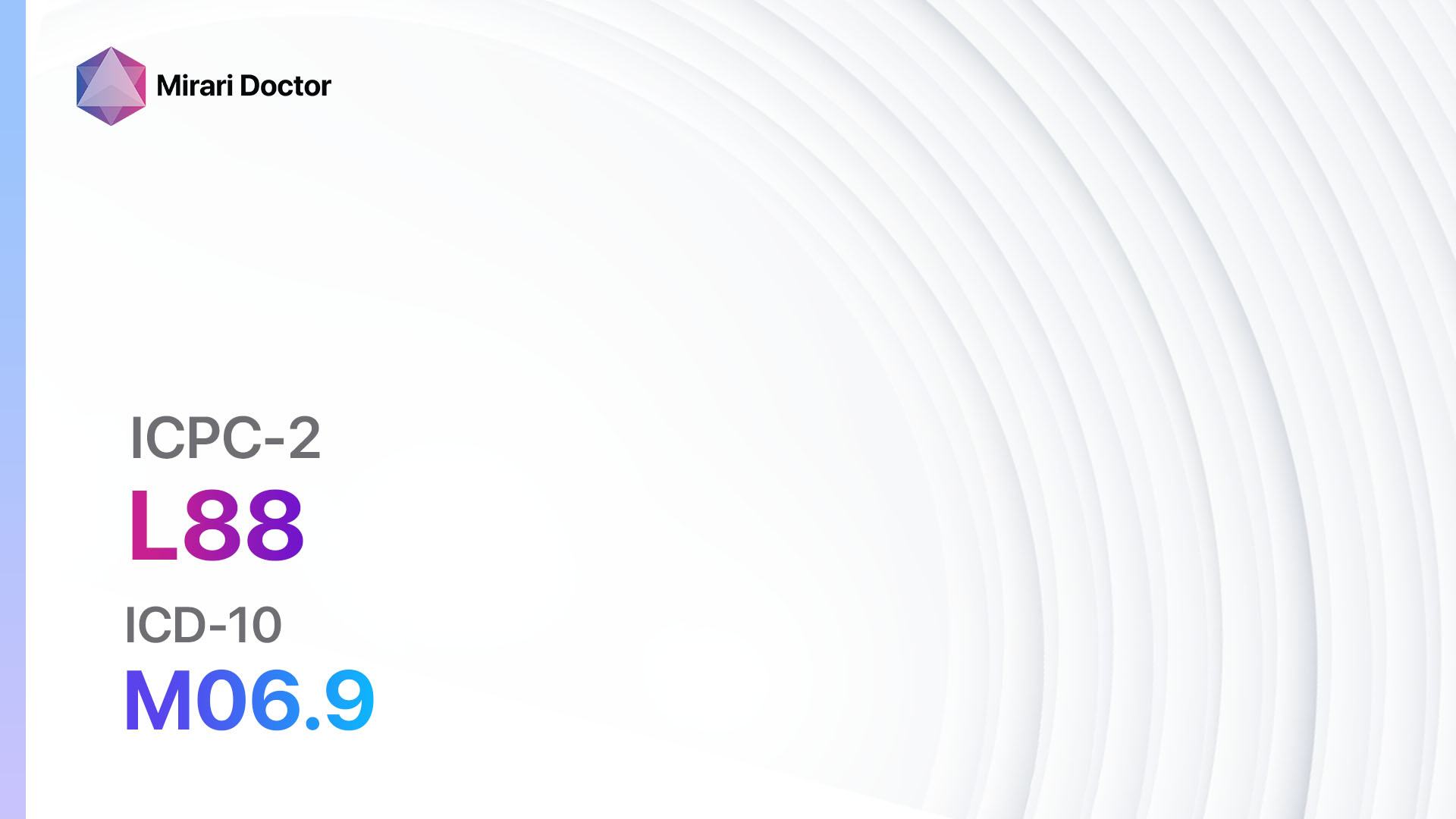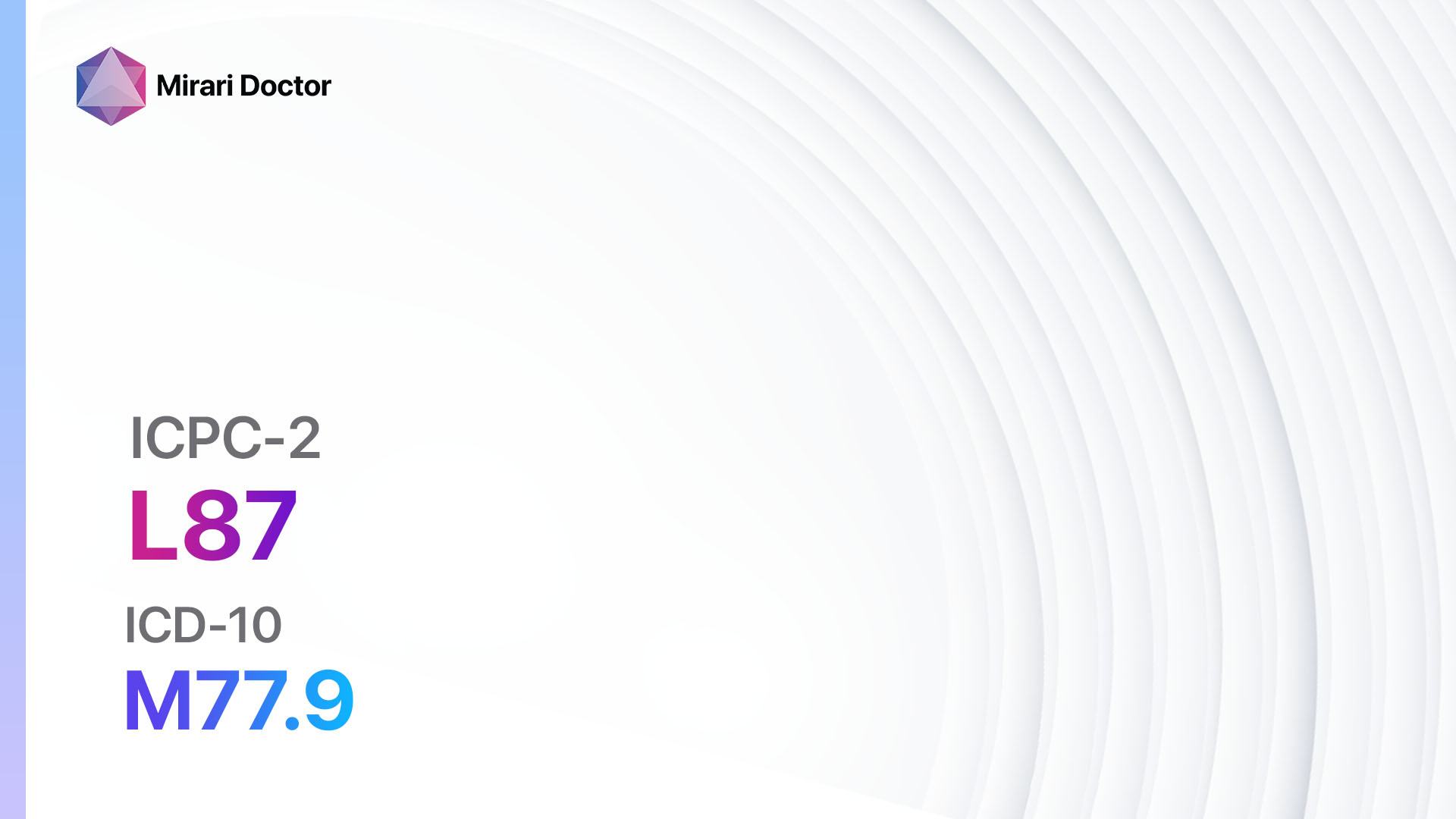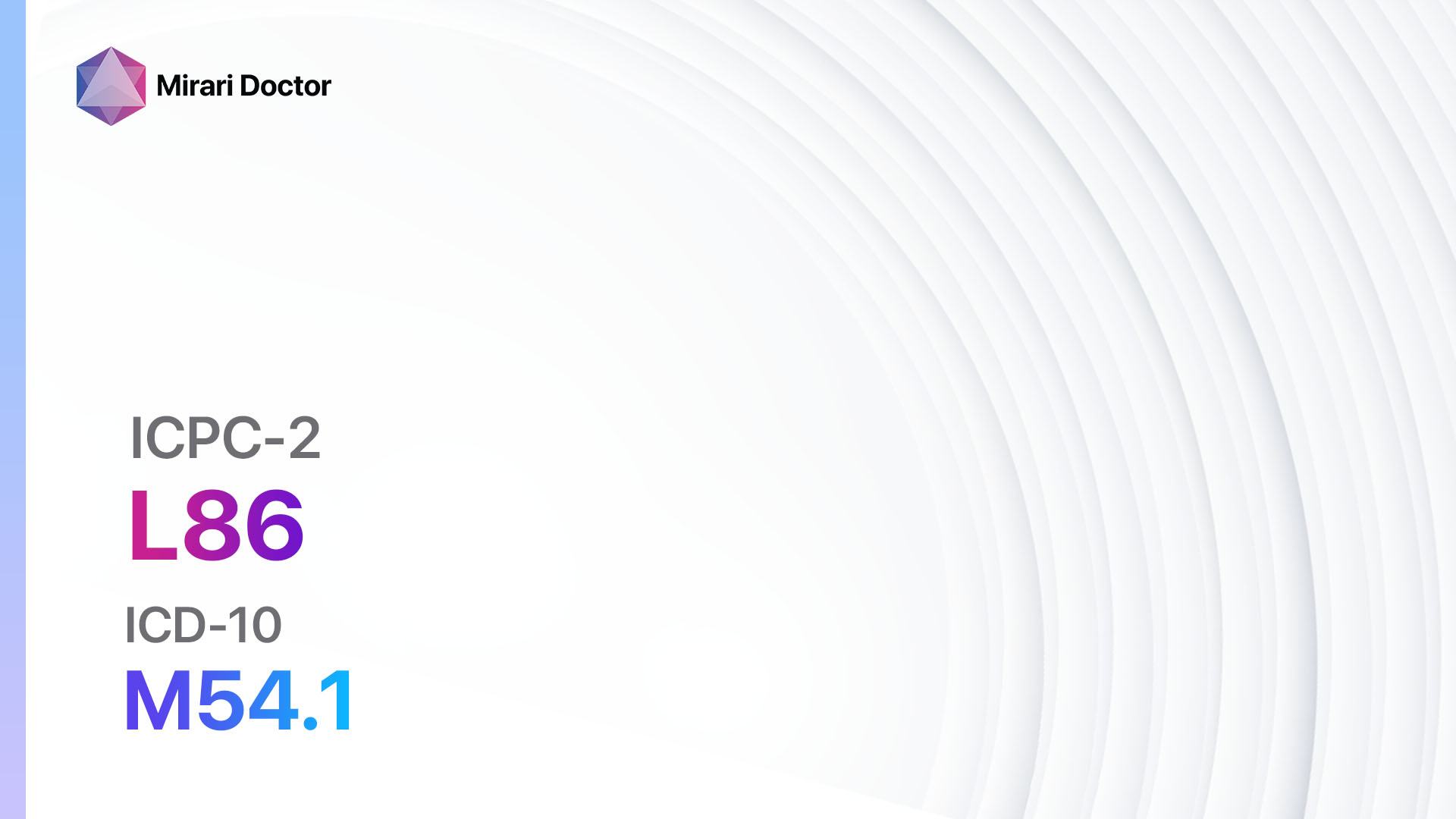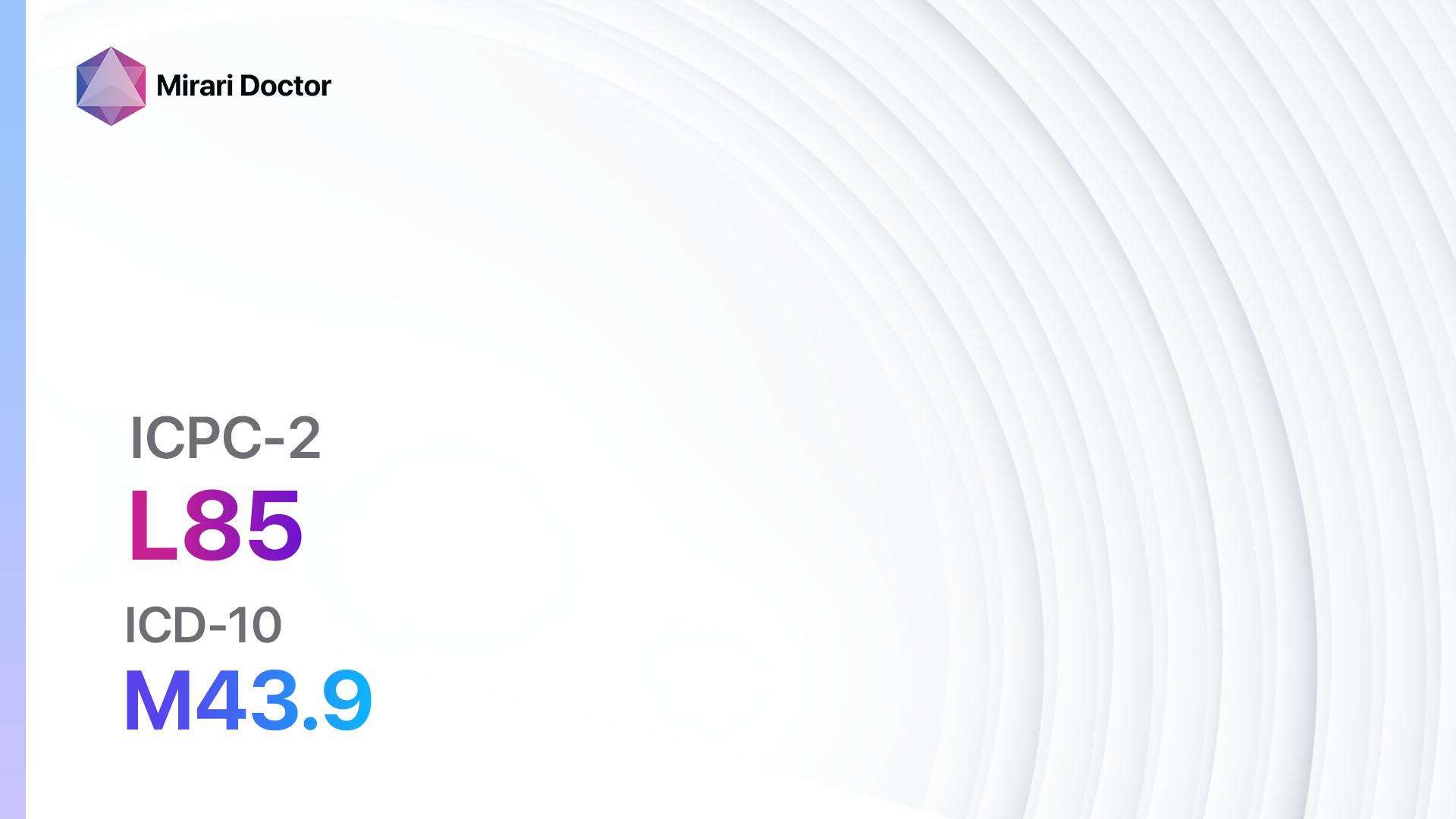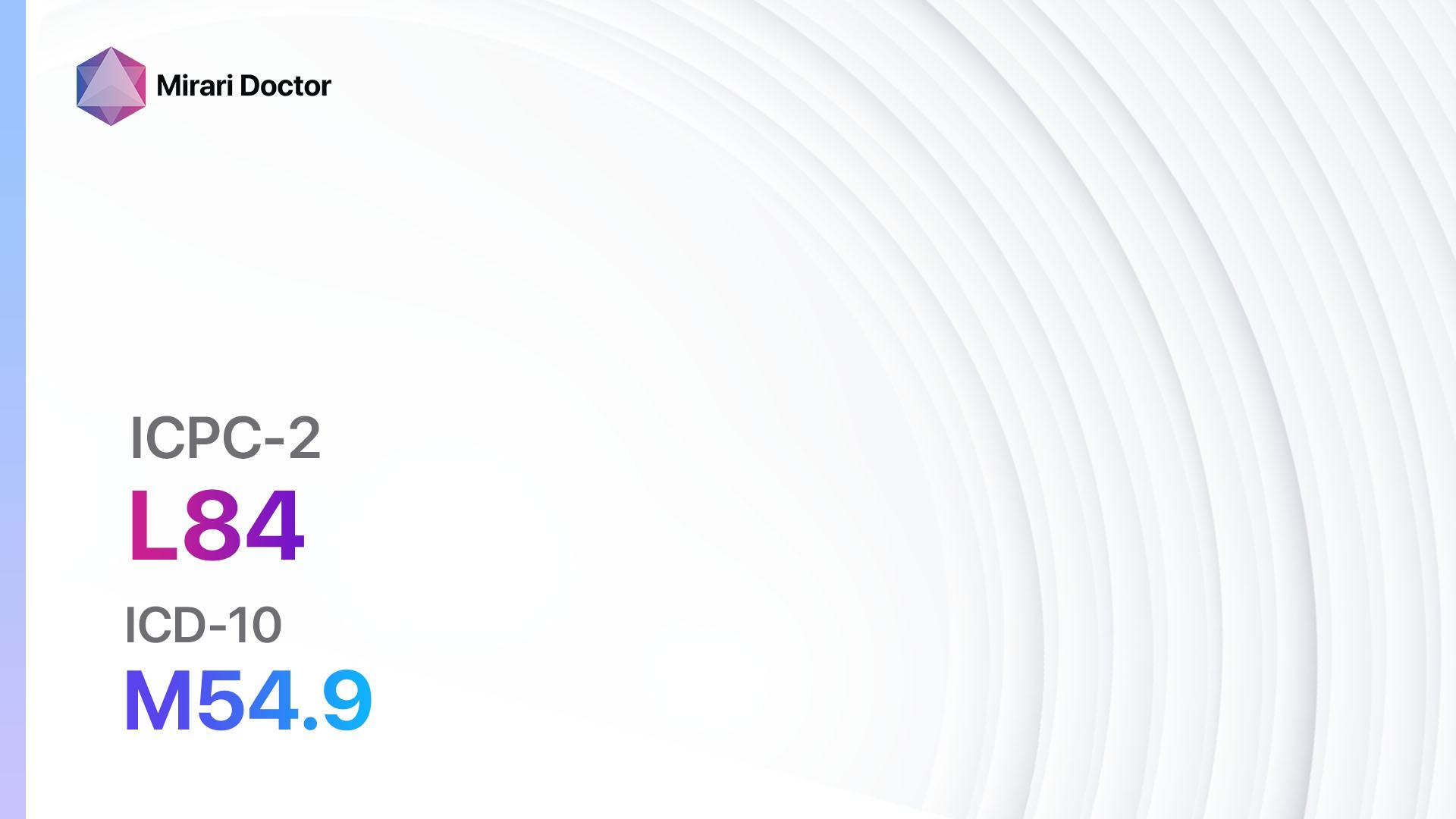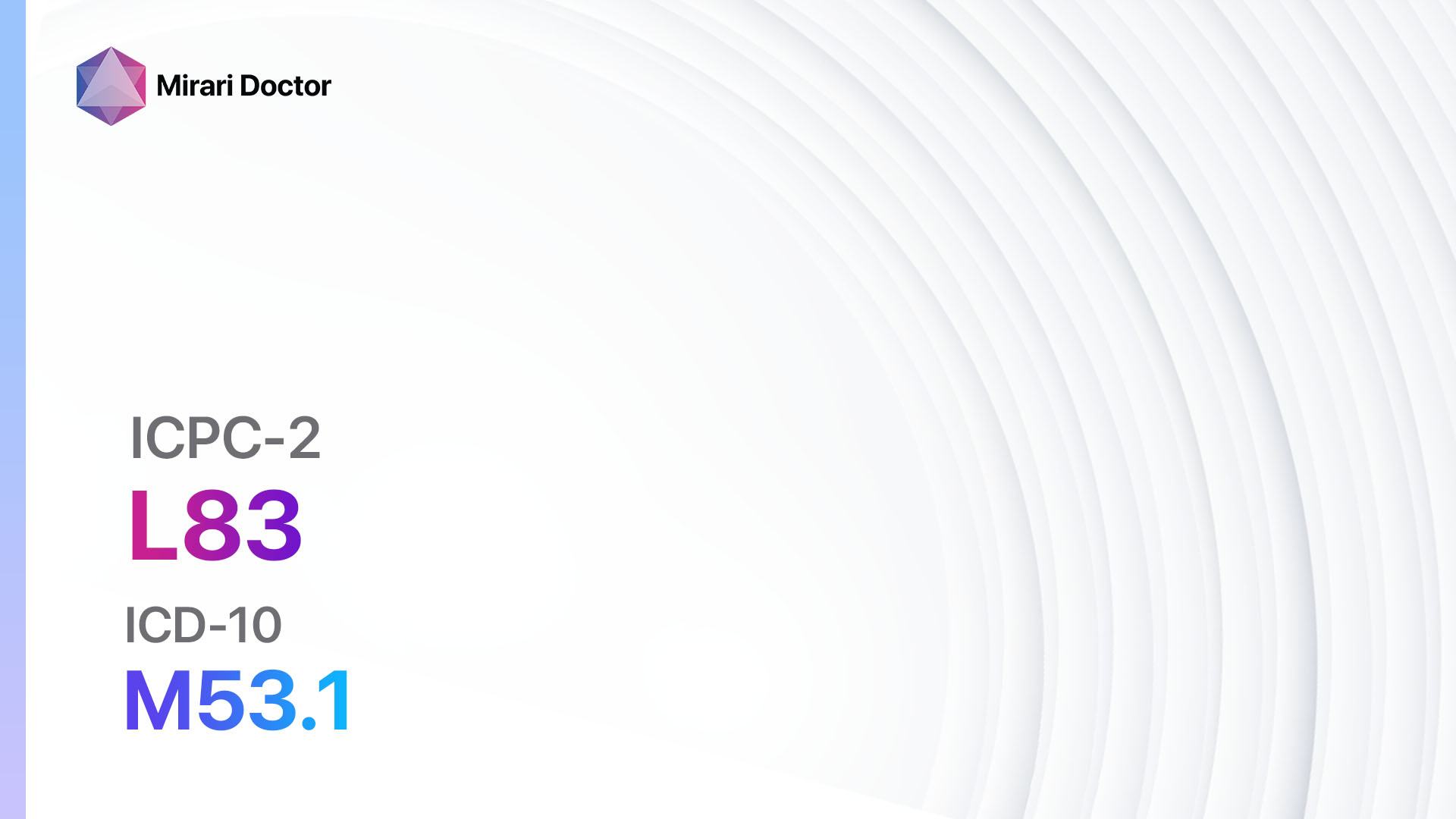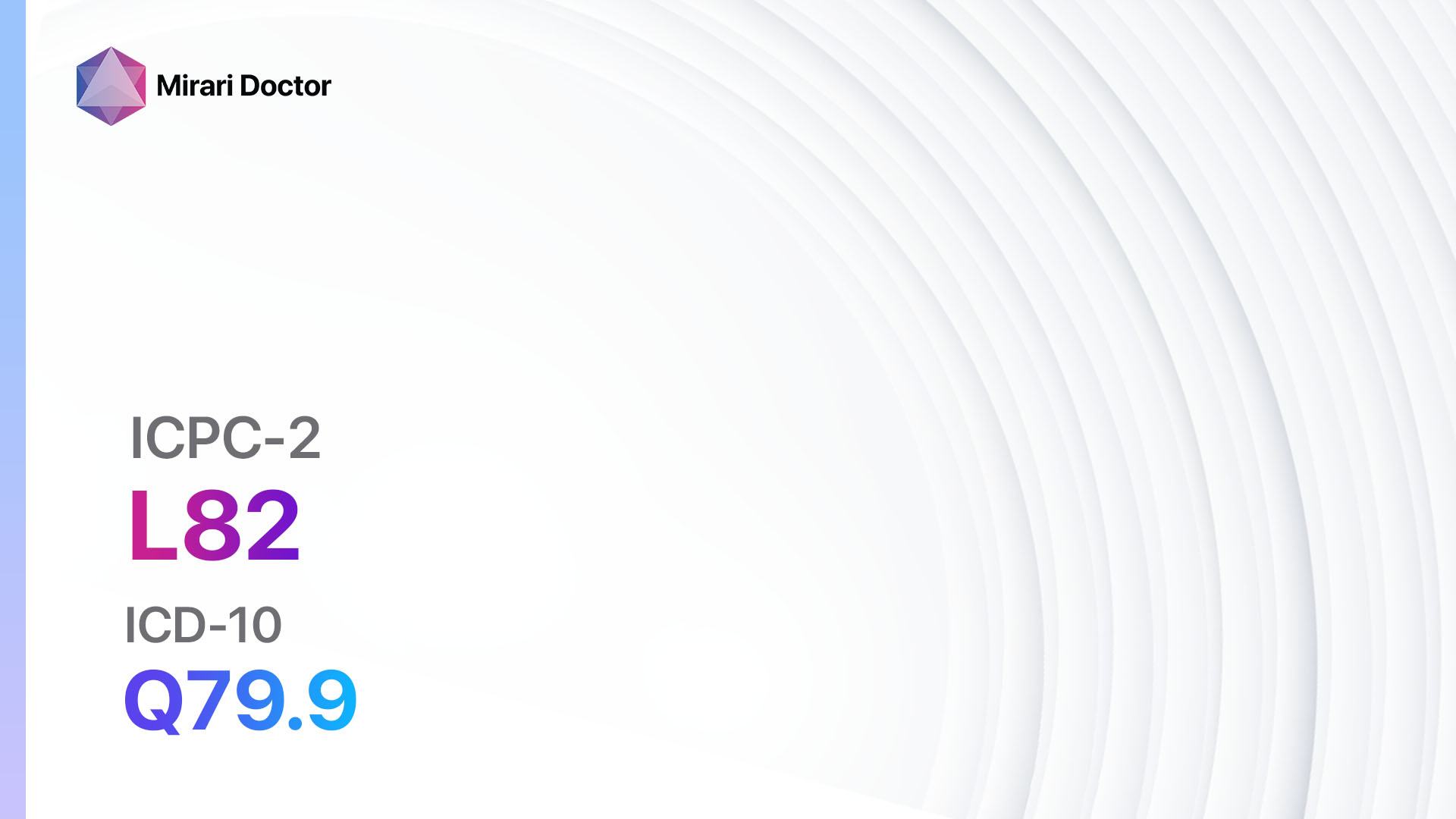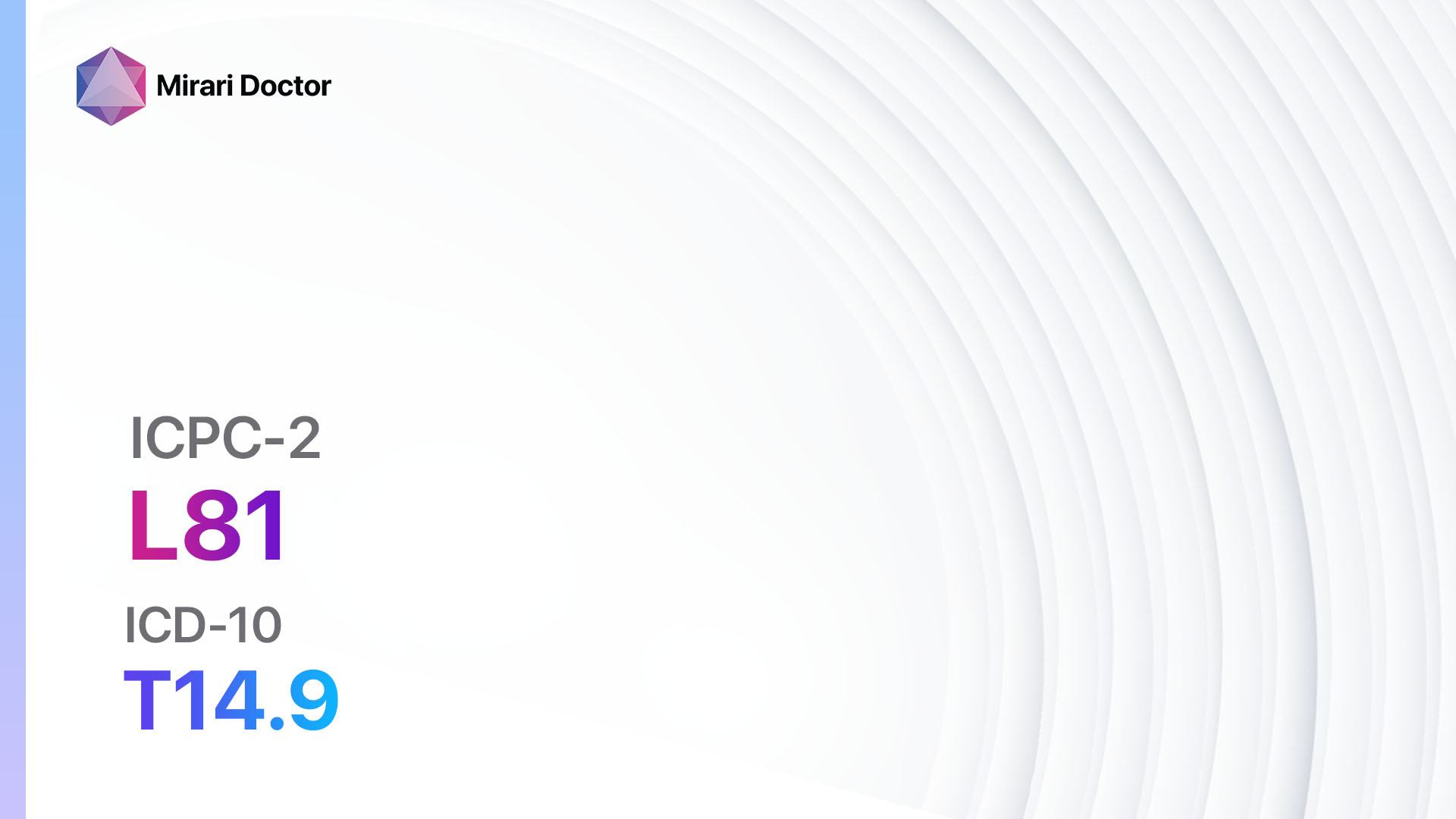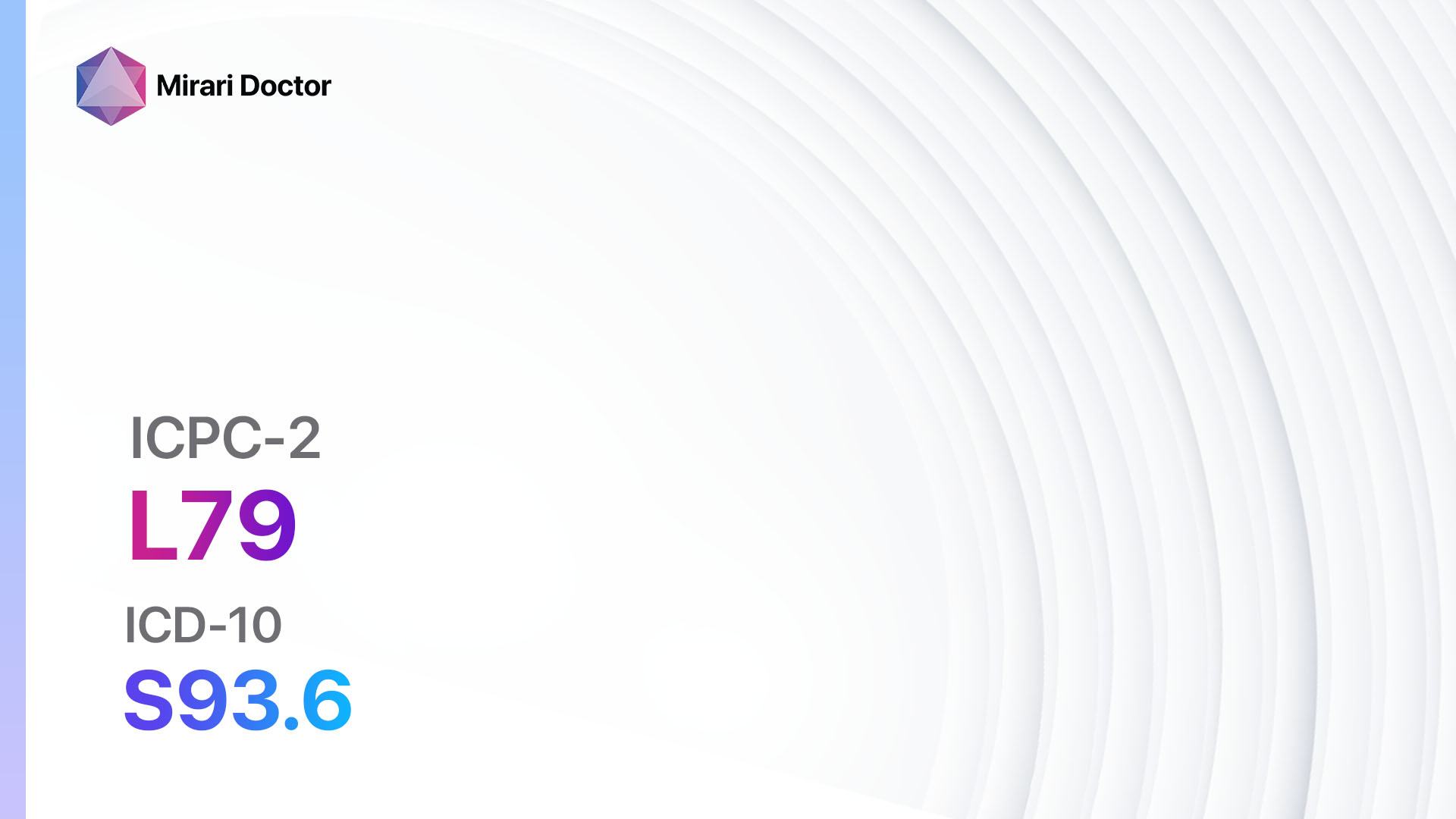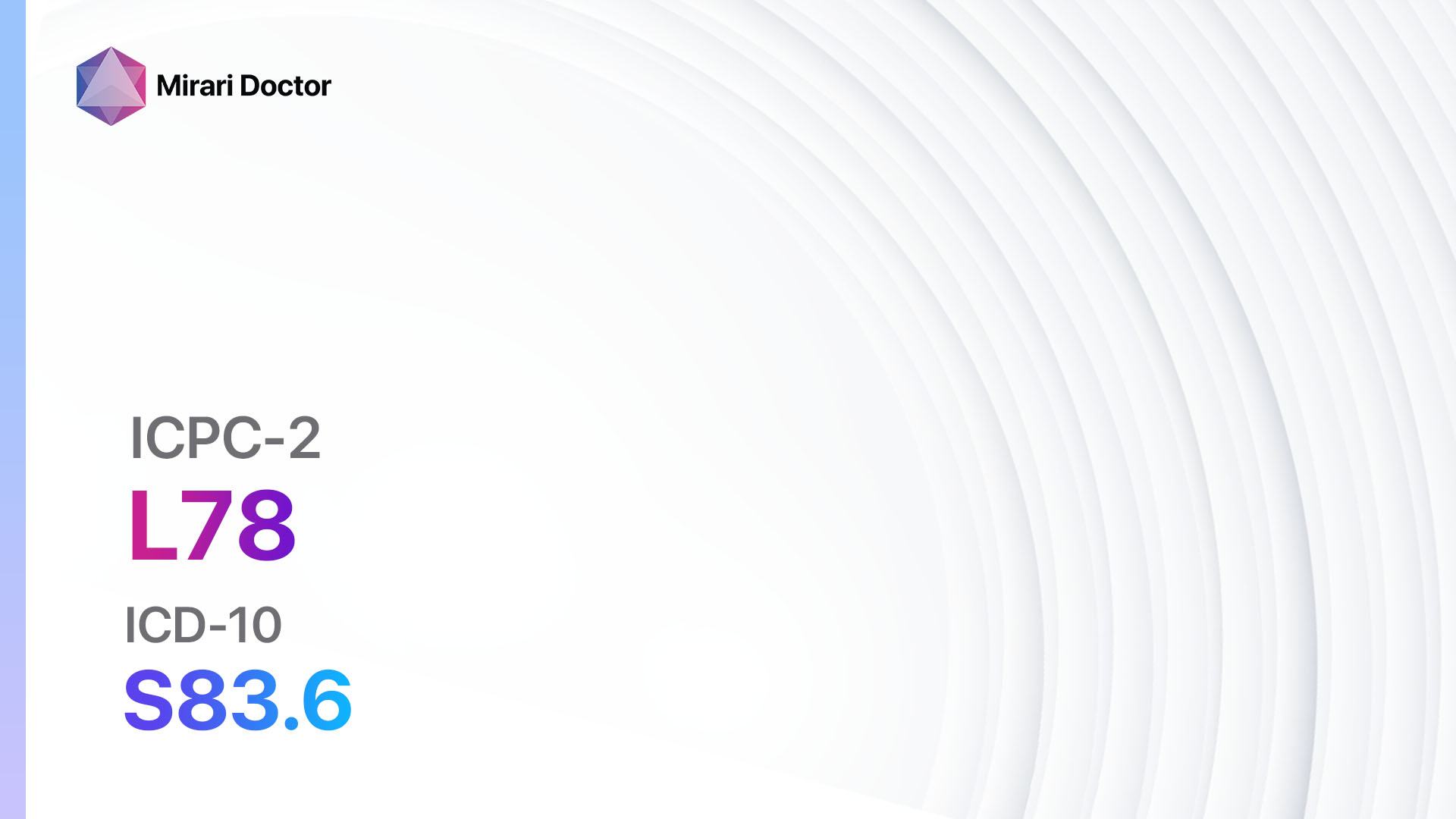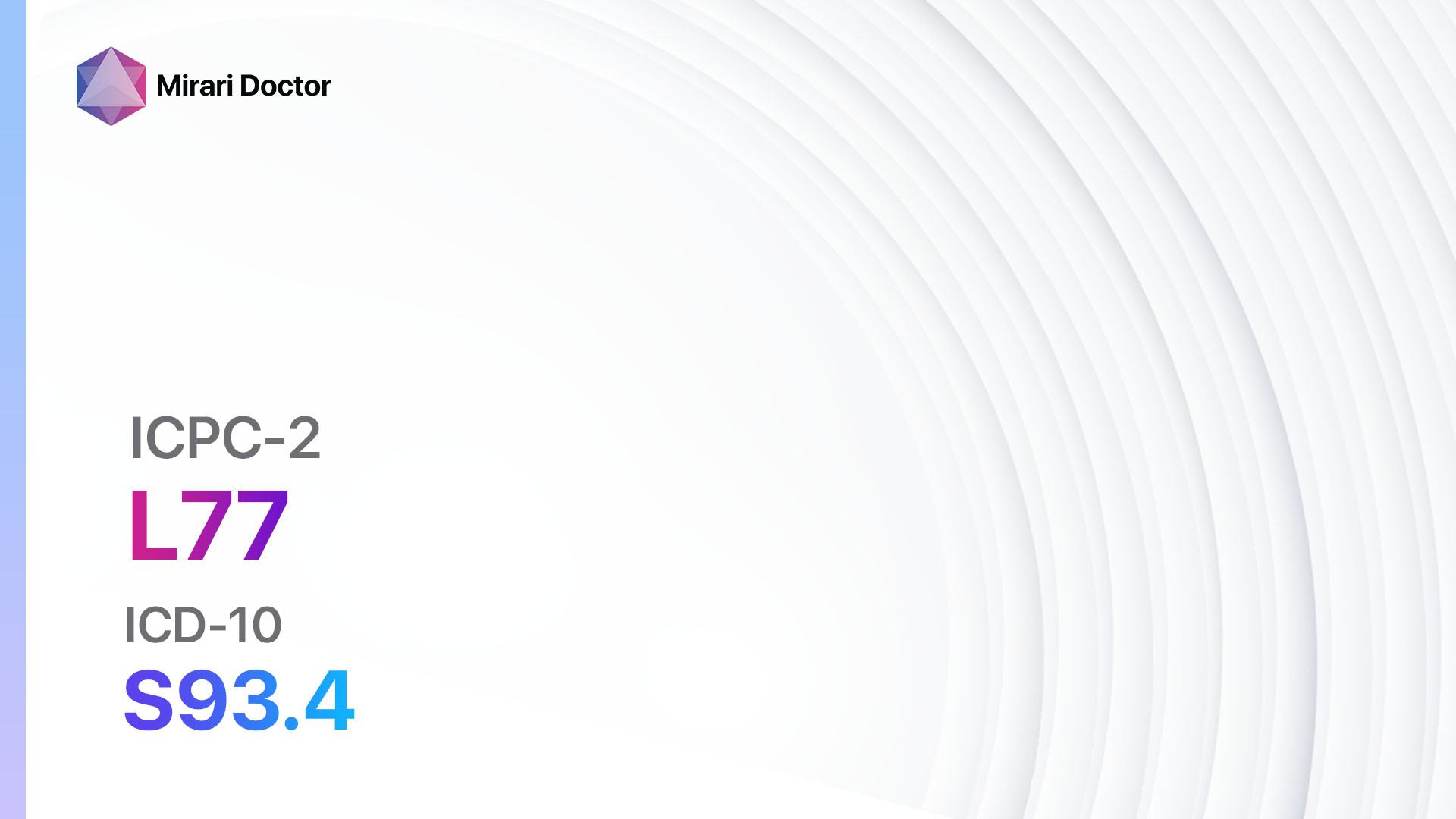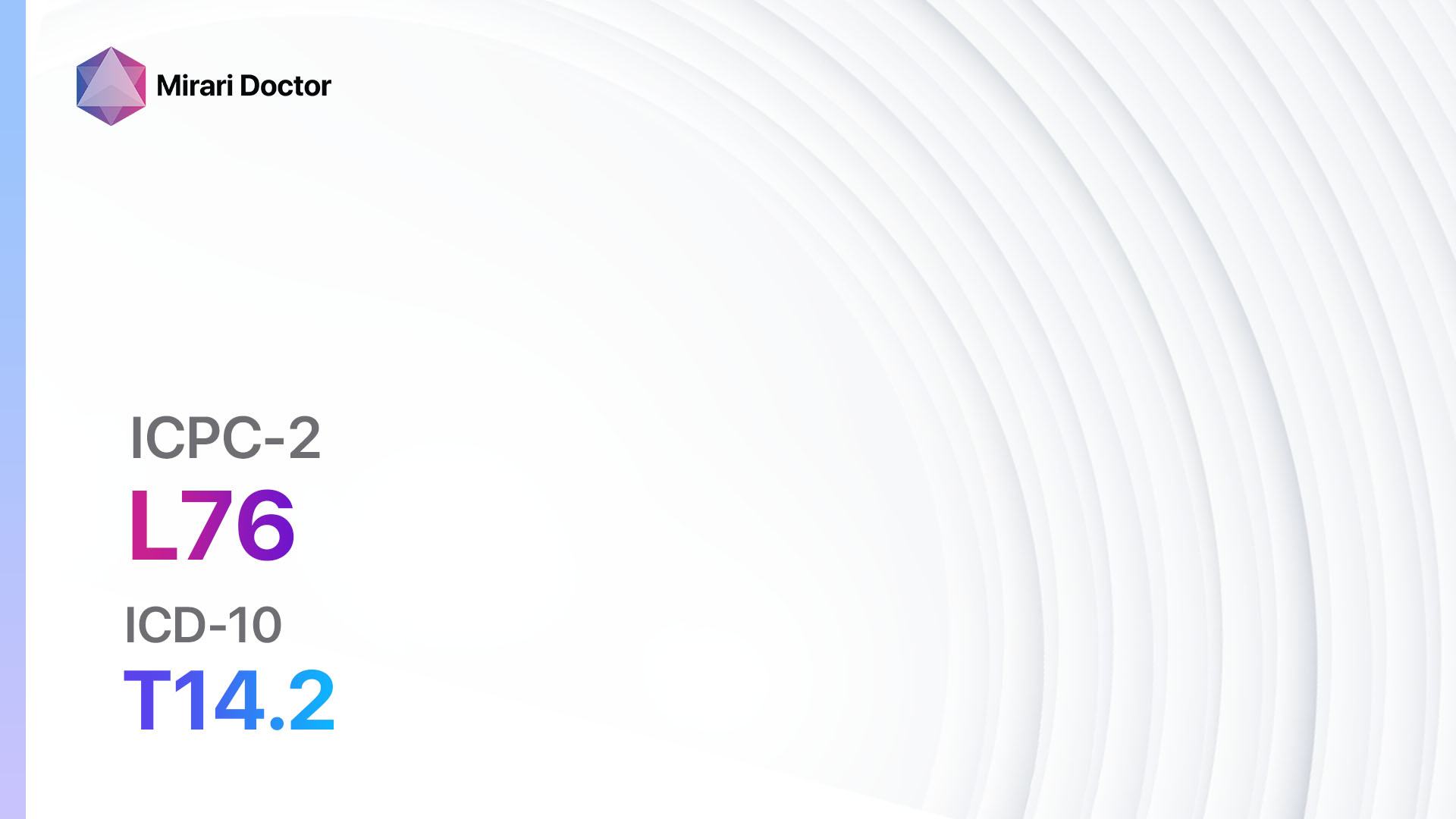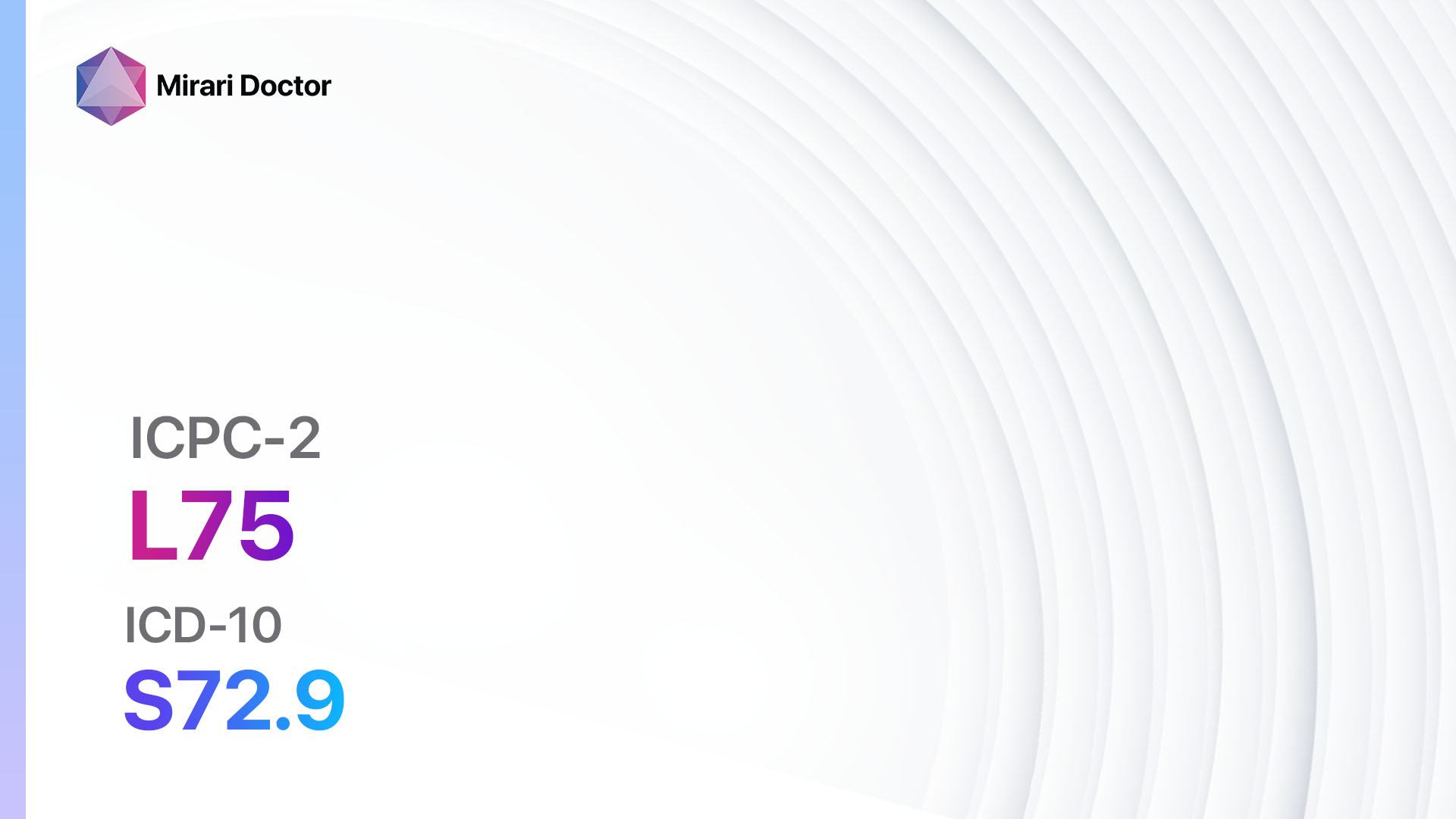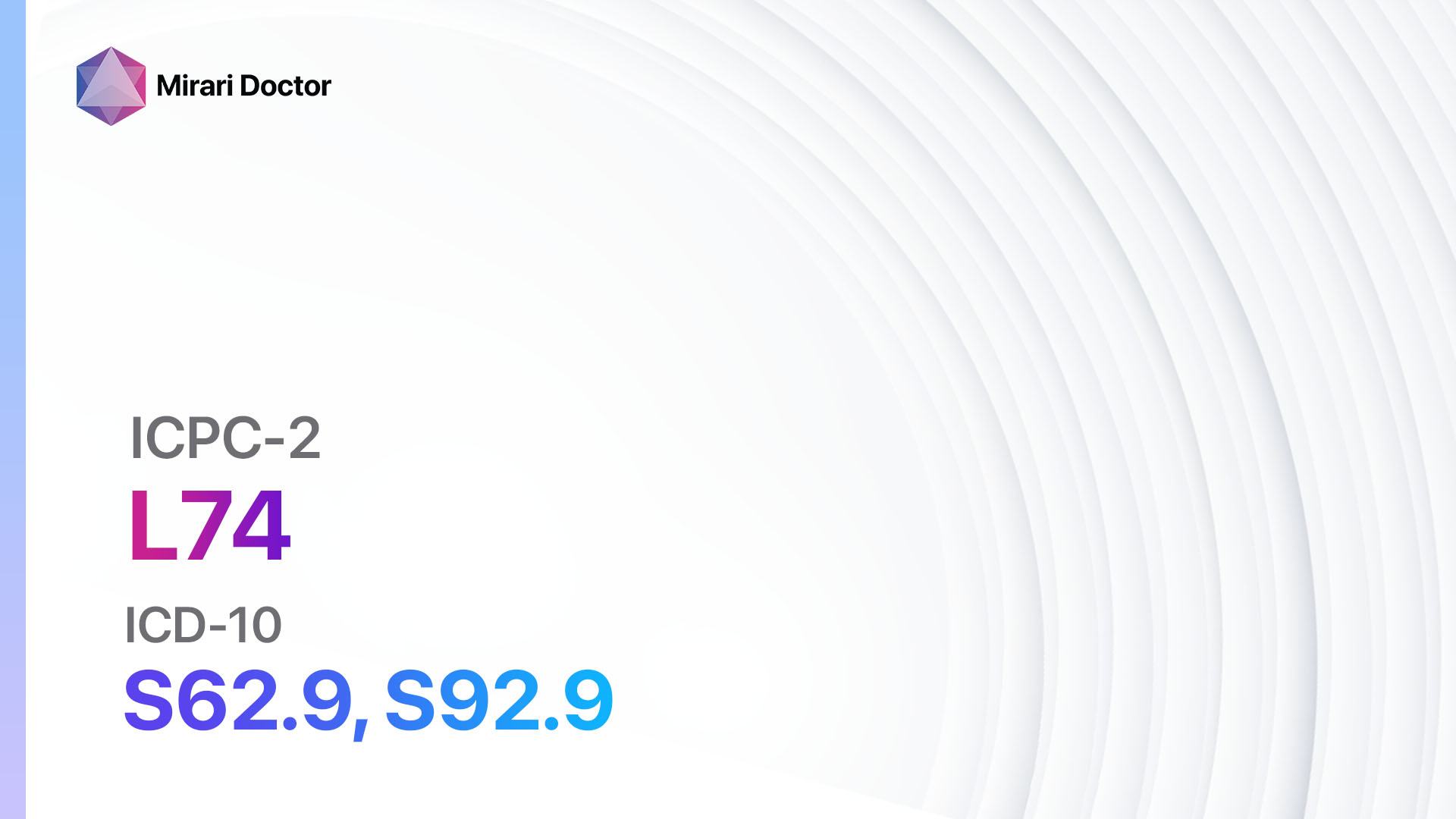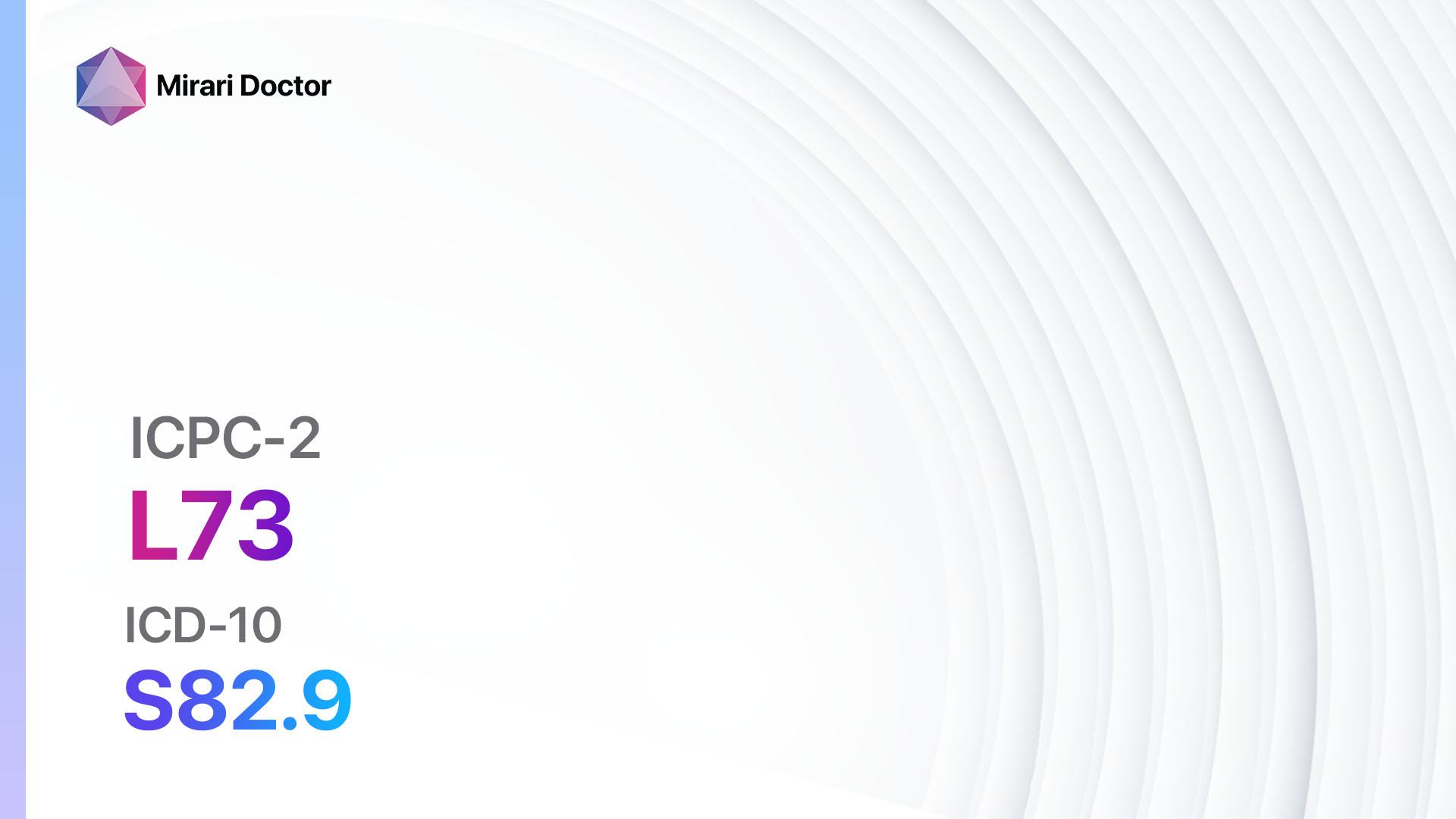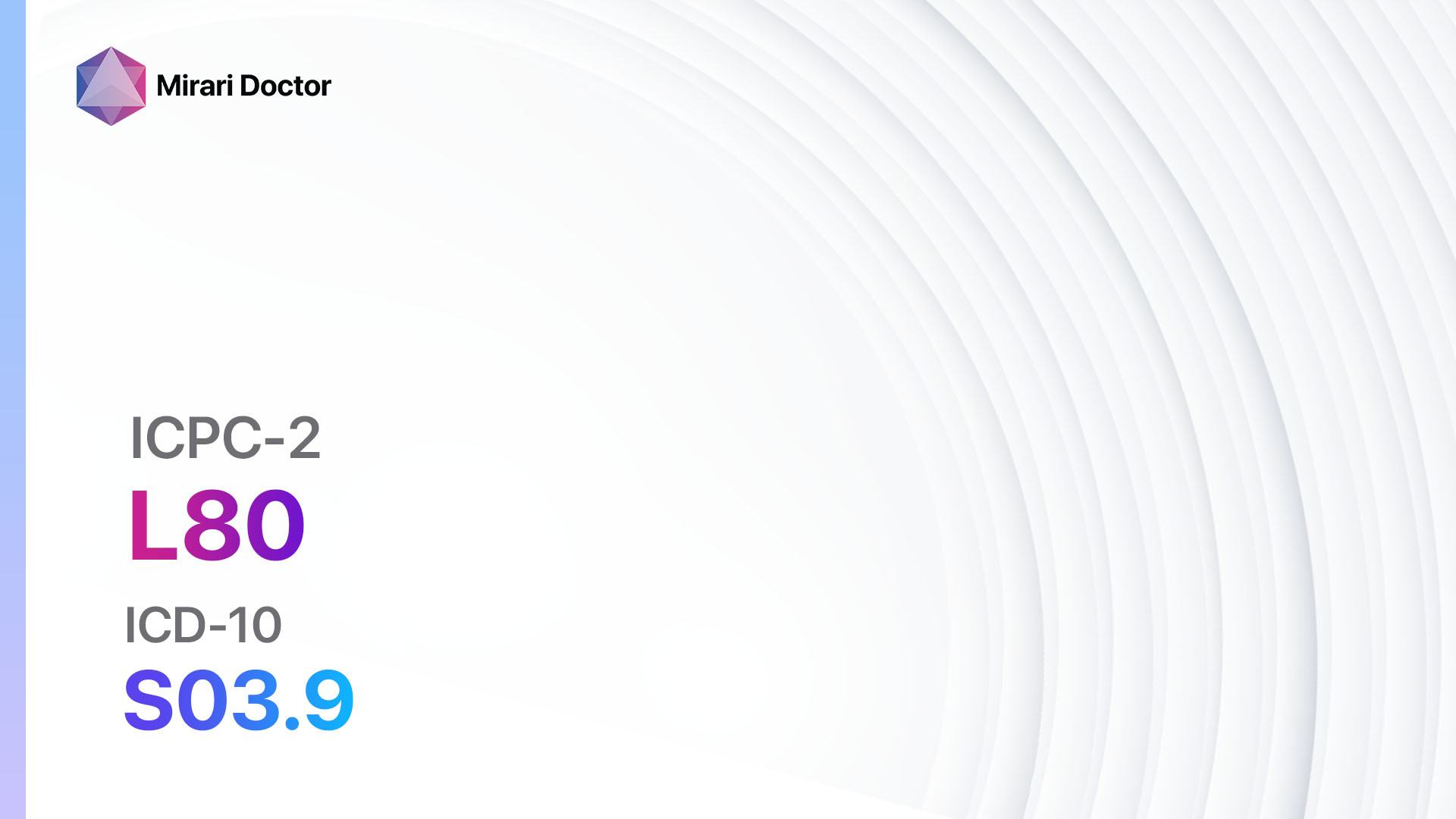
Introduction
Dislocation/subluxation refers to the partial or complete displacement of a joint, causing the bones to move out of their normal position. This condition can result in pain, swelling, and limited range of motion. [1] The aim of this guide is to provide an overview of the symptoms, causes, diagnostic steps, possible interventions, and lifestyle interventions for dislocation/subluxation.
Codes
- ICPC-2 Code: L80 Dislocation/subluxation
- ICD-10 Code: S03.9 Dislocation, sprain and strain of joints and ligaments of head, unspecified [2]
Symptoms
- Joint pain: Patients may experience acute or chronic pain in the affected joint. [3]
- Swelling: Swelling around the joint may be present due to inflammation. [4]
- Limited range of motion: Dislocation/subluxation can restrict the movement of the joint. [5]
- Deformity: In some cases, the joint may appear visibly deformed or misaligned. [6]
- Bruising: Bruising around the joint may occur due to trauma. [7]
- Numbness or tingling: Nerve compression or damage can cause numbness or tingling sensations. [8]
Causes
- Trauma: Dislocation/subluxation commonly occurs as a result of a sudden impact or injury to the joint. [9]
- Congenital abnormalities: Some individuals may have structural abnormalities that make them more prone to joint dislocation. [10]
- Ligament laxity: Weak or loose ligaments can increase the risk of joint instability and dislocation.
- Repetitive stress: Overuse or repetitive stress on a joint can lead to joint instability and potential dislocation.
- Connective tissue disorders: Certain genetic conditions, such as Ehlers-Danlos syndrome, can weaken the connective tissues and increase the risk of joint dislocation.
Diagnostic Steps
Medical History
- Gather information about the patient’s symptoms, including the location and duration of joint pain, any previous episodes of joint dislocation/subluxation, and any relevant medical conditions.
- Identify any risk factors for joint dislocation/subluxation, such as participation in high-impact sports or a family history of joint instability.
- Inquire about any recent trauma or injuries that may have caused the joint dislocation/subluxation.
Physical Examination
- Perform a thorough physical examination of the affected joint, assessing for signs of swelling, deformity, tenderness, and limited range of motion.
- Evaluate the stability of the joint by applying gentle pressure and assessing for any abnormal movement or clicking sensations.
- Check for any associated nerve or vascular damage, such as numbness, tingling, or changes in skin color.
Laboratory Tests
- Blood tests: Routine blood tests may be performed to rule out any underlying medical conditions or infections that could contribute to joint instability.
- Joint fluid analysis: If there is suspicion of infection or inflammation, a sample of the joint fluid may be collected and analyzed.
Diagnostic Imaging
- X-rays: X-rays can provide detailed images of the bones and joints, allowing for the identification of any fractures, dislocations, or abnormalities.
- MRI (Magnetic Resonance Imaging): MRI can provide more detailed images of the soft tissues, such as ligaments and tendons, to assess for any tears or damage.
- CT scan (Computed Tomography): CT scans may be used to obtain more detailed images of complex joint injuries or to assess for fractures.
Other Tests
- Arthroscopy: This minimally invasive procedure involves inserting a small camera into the joint to visualize and assess any internal damage or abnormalities.
- Electromyography (EMG): EMG may be performed to assess nerve function and identify any nerve damage or compression.
Follow-up and Patient Education
- Provide appropriate treatment options based on the diagnosis and severity of the dislocation/subluxation.
- Educate the patient about the importance of joint protection, proper body mechanics, and the use of assistive devices if necessary.
- Discuss the potential risks of recurrent dislocation/subluxation and the importance of seeking prompt medical attention if symptoms worsen or new symptoms develop.
Possible Interventions
Traditional Interventions
Medications:
Top 5 drugs for Dislocation/subluxation:
- Nonsteroidal anti-inflammatory drugs (NSAIDs) (e.g., Ibuprofen, Naproxen):
- Cost: Generic versions can be $3-$20/month.
- Contraindications: History of gastrointestinal bleeding, renal impairment.
- Side effects: Upset stomach, gastrointestinal ulcers.
- Severe side effects: Kidney damage, cardiovascular events.
- Drug interactions: Anticoagulants, corticosteroids.
- Warning: Prolonged use may increase the risk of gastrointestinal bleeding.
- Muscle relaxants (e.g., Cyclobenzaprine, Methocarbamol):
- Cost: Generic versions can be $10-$30/month.
- Contraindications: Glaucoma, urinary retention.
- Side effects: Drowsiness, dizziness.
- Severe side effects: Allergic reactions, liver toxicity.
- Drug interactions: Sedatives, alcohol.
- Warning: May cause drowsiness, avoid driving or operating machinery.
- Opioids (e.g., Oxycodone, Hydrocodone):
- Cost: Generic versions can be $10-$50/month.
- Contraindications: Respiratory depression, history of substance abuse.
- Side effects: Constipation, drowsiness.
- Severe side effects: Respiratory depression, addiction.
- Drug interactions: Benzodiazepines, alcohol.
- Warning: High risk of dependence and addiction, use with caution.
- Corticosteroids (e.g., Prednisone, Methylprednisolone):
- Cost: Generic versions can be $10-$50/month.
- Contraindications: Active infections, uncontrolled diabetes.
- Side effects: Increased appetite, weight gain.
- Severe side effects: Osteoporosis, adrenal suppression.
- Drug interactions: NSAIDs, anticoagulants.
- Warning: Prolonged use may require gradual tapering to avoid adrenal insufficiency.
- Local anesthetics (e.g., Lidocaine, Bupivacaine):
- Cost: Generic versions can be $10-$30/month.
- Contraindications: Allergy to local anesthetics, severe liver disease.
- Side effects: Temporary numbness, skin irritation.
- Severe side effects: Allergic reactions, cardiac toxicity.
- Drug interactions: None significant.
- Warning: Use with caution in patients with heart conditions.
Alternative Drugs:
- Acetaminophen: Over-the-counter pain reliever that can be used as an alternative to NSAIDs.
- Topical analgesics: Creams or gels containing ingredients such as menthol or capsaicin that can provide localized pain relief.
- Antidepressants: Certain antidepressants, such as Amitriptyline or Duloxetine, may be prescribed for chronic pain management.
Surgical Procedures:
- Closed reduction: A procedure performed to manually realign the dislocated joint without making an incision.
- Open reduction: In cases where closed reduction is not successful, open reduction may be performed, which involves surgically accessing the joint to realign the bones.
- Joint stabilization surgery: In cases of recurrent dislocation/subluxation, surgical procedures may be performed to stabilize the joint and prevent further episodes.
Alternative Interventions
- Physical therapy: A structured exercise program can help strengthen the muscles around the joint, improve range of motion, and enhance joint stability. Cost: $50-$150 per session.
- Chiropractic care: Manual manipulation of the spine and joints may help improve joint alignment and reduce pain. Cost: $50-$200 per session.
- Acupuncture: May help reduce pain and promote healing by stimulating specific points on the body. Cost: $60-$120 per session.
- Massage therapy: Massage techniques can help relax muscles, reduce pain, and improve circulation. Cost: $60-$120 per session.
- Assistive devices: The use of braces, splints, or orthotics can provide support and stability to the affected joint. Cost: Varies depending on the type of device.
Lifestyle Interventions
- Rest and immobilization: Avoiding activities that aggravate the joint and using splints or braces to immobilize the joint can promote healing and prevent further injury. Cost: Varies depending on the type of immobilization device.
- Physical activity modification: Engaging in low-impact exercises and avoiding high-impact activities can help protect the joint and reduce the risk of further dislocation/subluxation. Cost: Varies depending on the type of exercise or activity.
- Weight management: Maintaining a healthy weight can reduce stress on the joints and improve joint stability. Cost: Varies depending on the chosen weight management program.
- Joint protection techniques: Learning proper body mechanics and using assistive devices, such as crutches or canes, can help reduce the risk of joint injury. Cost: Varies depending on the type of assistive device.
- Physical therapy exercises: Performing prescribed exercises at home can help improve joint strength, stability, and range of motion. Cost: Varies depending on the need for additional equipment or aids.
It is important to note that the cost ranges provided are approximate and may vary depending on the location and availability of the interventions.
Mirari Cold Plasma Alternative Intervention
Understanding Mirari Cold Plasma
- Safe and Non-Invasive Treatment: Mirari Cold Plasma is a safe and non-invasive treatment option for various skin conditions. It does not require incisions, minimizing the risk of scarring, bleeding, or tissue damage.
- Efficient Extraction of Foreign Bodies: Mirari Cold Plasma facilitates the removal of foreign bodies from the skin by degrading and dissociating organic matter, allowing easier access and extraction.
- Pain Reduction and Comfort: Mirari Cold Plasma has a local analgesic effect, providing pain relief during the treatment, making it more comfortable for the patient.
- Reduced Risk of Infection: Mirari Cold Plasma has antimicrobial properties, effectively killing bacteria and reducing the risk of infection.
- Accelerated Healing and Minimal Scarring: Mirari Cold Plasma stimulates wound healing and tissue regeneration, reducing healing time and minimizing the formation of scars.
Mirari Cold Plasma Prescription
Video instructions for using Mirari Cold Plasma Device – L80 Dislocation/subluxation (ICD-10:S03.9)
| Mild | Moderate | Severe |
| Mode setting: 2 (Wound Healing) Location: 0 (Localized) Morning: 15 minutes, Evening: 15 minutes |
Mode setting: 2 (Wound Healing) Location: 0 (Localized) Morning: 30 minutes, Lunch: 30 minutes, Evening: 30 minutes |
Mode setting: 2 (Wound Healing) Location: 0 (Localized) Morning: 30 minutes, Lunch: 30 minutes, Evening: 30 minutes |
| Mode setting: 9 (Arthritis) Location: 0 (Localized) Morning: 15 minutes, Evening: 15 minutes |
Mode setting: 9 (Arthritis) Location: 0 (Localized) Morning: 30 minutes, Lunch: 30 minutes, Evening: 30 minutes |
Mode setting: 9 (Arthritis) Location: 0 (Localized) Morning: 30 minutes, Lunch: 30 minutes, Evening: 30 minutes |
| Total Morning: 30 minutes approx. $5 USD, Evening: 30 minutes approx. $5 USD |
Total Morning: 60 minutes approx. $10 USD, Lunch: 60 minutes approx. $10 USD, Evening: 60 minutes approx. $10 USD, |
Total Morning: 60 minutes approx. $10 USD, Lunch: 60 minutes approx. $10 USD, Evening: 60 minutes approx. $10 USD, |
| Usual treatment for 7-60 days approx. $70 USD – $600 USD | Usual treatment for 6-8 weeks approx. $1,260 USD – $1,680 USD |
Usual treatment for 3-6 months approx. $2,700 USD – $5,400 USD
|
 |
|
Use the Mirari Cold Plasma device to treat Dislocation/subluxation effectively.
WARNING: MIRARI COLD PLASMA IS DESIGNED FOR THE HUMAN BODY WITHOUT ANY ARTIFICIAL OR THIRD PARTY PRODUCTS. USE OF OTHER PRODUCTS IN COMBINATION WITH MIRARI COLD PLASMA MAY CAUSE UNPREDICTABLE EFFECTS, HARM OR INJURY. PLEASE CONSULT A MEDICAL PROFESSIONAL BEFORE COMBINING ANY OTHER PRODUCTS WITH USE OF MIRARI.
Step 1: Cleanse the Skin
- Start by cleaning the affected area of the skin with a gentle cleanser or mild soap and water. Gently pat the area dry with a clean towel.
Step 2: Prepare the Mirari Cold Plasma device
- Ensure that the Mirari Cold Plasma device is fully charged or has fresh batteries as per the manufacturer’s instructions. Make sure the device is clean and in good working condition.
- Switch on the Mirari device using the power button or by following the specific instructions provided with the device.
- Some Mirari devices may have adjustable settings for intensity or treatment duration. Follow the manufacturer’s instructions to select the appropriate settings based on your needs and the recommended guidelines.
Step 3: Apply the Device
- Place the Mirari device in direct contact with the affected area of the skin. Gently glide or hold the device over the skin surface, ensuring even coverage of the area experiencing.
- Slowly move the Mirari device in a circular motion or follow a specific pattern as indicated in the user manual. This helps ensure thorough treatment coverage.
Step 4: Monitor and Assess:
- Keep track of your progress and evaluate the effectiveness of the Mirari device in managing your Dislocation/subluxation. If you have any concerns or notice any adverse reactions, consult with your health care professional.
Note
This guide is for informational purposes only and should not replace the advice of a medical professional. Always consult with your healthcare provider or a qualified medical professional for personal advice, diagnosis, or treatment. Do not solely rely on the information presented here for decisions about your health. Use of this information is at your own risk. The authors of this guide, nor any associated entities or platforms, are not responsible for any potential adverse effects or outcomes based on the content.
Mirari Cold Plasma System Disclaimer
- Purpose: The Mirari Cold Plasma System is a Class 2 medical device designed for use by trained healthcare professionals. It is registered for use in Thailand and Vietnam. It is not intended for use outside of these locations.
- Informational Use: The content and information provided with the device are for educational and informational purposes only. They are not a substitute for professional medical advice or care.
- Variable Outcomes: While the device is approved for specific uses, individual outcomes can differ. We do not assert or guarantee specific medical outcomes.
- Consultation: Prior to utilizing the device or making decisions based on its content, it is essential to consult with a Certified Mirari Tele-Therapist and your medical healthcare provider regarding specific protocols.
- Liability: By using this device, users are acknowledging and accepting all potential risks. Neither the manufacturer nor the distributor will be held accountable for any adverse reactions, injuries, or damages stemming from its use.
- Geographical Availability: This device has received approval for designated purposes by the Thai and Vietnam FDA. As of now, outside of Thailand and Vietnam, the Mirari Cold Plasma System is not available for purchase or use.
References
- Skelley, N. W., & McCormick, J. J. (2014). In-game management of common joint dislocations. Sports health, 6(3), 246-255.
- World Health Organization. (2016). International statistical classification of diseases and related health problems (10th revision).
- Lädermann, A., Lübbeke, A., Mélis, B., Stern, R., Christofilopoulos, P., Bacle, G., & Walch, G. (2011). Prevalence of neurologic lesions after total shoulder arthroplasty. The Journal of bone and joint surgery. American volume, 93(14), 1288-1293.
- Hovelius, L., & Rahme, H. (2016). Primary anterior dislocation of the shoulder: long-term prognosis at the age of 40 years or younger. Knee Surgery, Sports Traumatology, Arthroscopy, 24(2), 330-342.
- Cutts, S., Prempeh, M., & Drew, S. (2009). Anterior shoulder dislocation. The Annals of The Royal College of Surgeons of England, 91(1), 2-7.
- Khiami, F., Gérometta, A., & Loriaut, P. (2015). Management of recent first-time anterior shoulder dislocations. Orthopaedics & Traumatology: Surgery & Research, 101(1), S51-S57.
- Krøner, K., Lind, T., & Jensen, J. (1989). The epidemiology of shoulder dislocations. Archives of orthopaedic and trauma surgery, 108(5), 288-290.
- Robinson, C. M., Seah, M., & Akhtar, M. A. (2012). The epidemiology, risk of recurrence, and functional outcome after an acute traumatic posterior dislocation of the shoulder. The Journal of bone and joint surgery. American volume, 94(17), 1605-1613.
- Zacchilli, M. A., & Owens, B. D. (2010). Epidemiology of shoulder dislocations presenting to emergency departments in the United States. The Journal of bone and joint surgery. American volume, 92(3), 542-549.
- Gaskill, T. R., Taylor, D. C., & Millett, P. J. (2011). Management of multidirectional instability of the shoulder. Journal of the American Academy of Orthopaedic Surgeons, 19(12), 758-767.
Related articles
Made in USA


